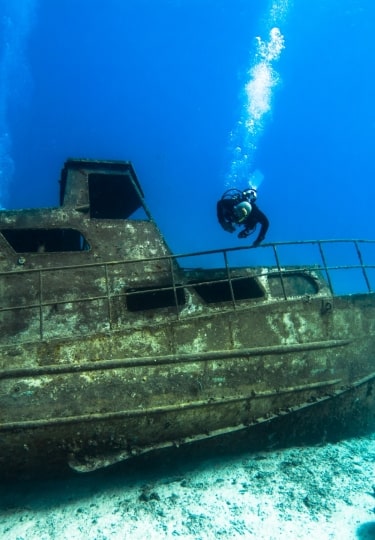Pristine and inviting, Aruba’s diverse scuba diving sites have made the island a haven for underwater adventures, regardless of whether it’s your first dive or your logbook is overflowing.
The island is renowned for its soft white sand and crystal-clear cyan waters. But beyond Aruba’s beckoning beaches you’ll find vivid corals (all the healthier thanks in part to a recent ban on coral-damaging sunscreens), sunken shipwrecks, and even airplanes converted into artificial reefs.
With everything from entry-level shore dives to advanced, current-heavy drifts on offer, beginner and experienced divers alike are well catered for. Fans of wreck diving in particular will be in their element, as the island boasts one of the highest concentrations of sunken vessels in the Caribbean.
Here are the best places to enjoy scuba diving in Aruba.
Antilla Shipwreck
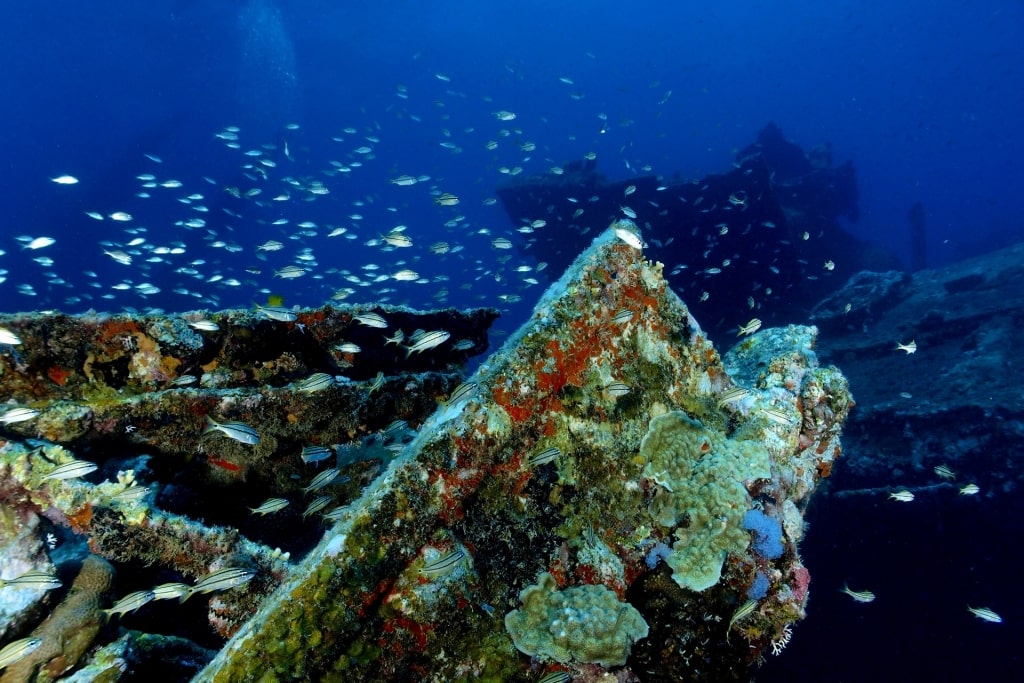
Antilla Shipwreck
Lying on the seafloor just a few minutes’ boat ride from the inviting white sands of Malmok Bay, the Antilles Shipwreck is considered by many as Aruba’s best dive site. Visitable on either a shore or boat dive, it’s also easily accessible.
Constructed in 1939 by the Germans, the Antilla found itself in the island’s waters during World War Two. The quick-witted Dutch took advantage of the crew’s lack of up-to-date knowledge on the battle and gained access to purposefully sink the vessel by opening the valves.
Since then, the aggressive swell has broken the ship into pieces, and it has served as an artificial reef since.
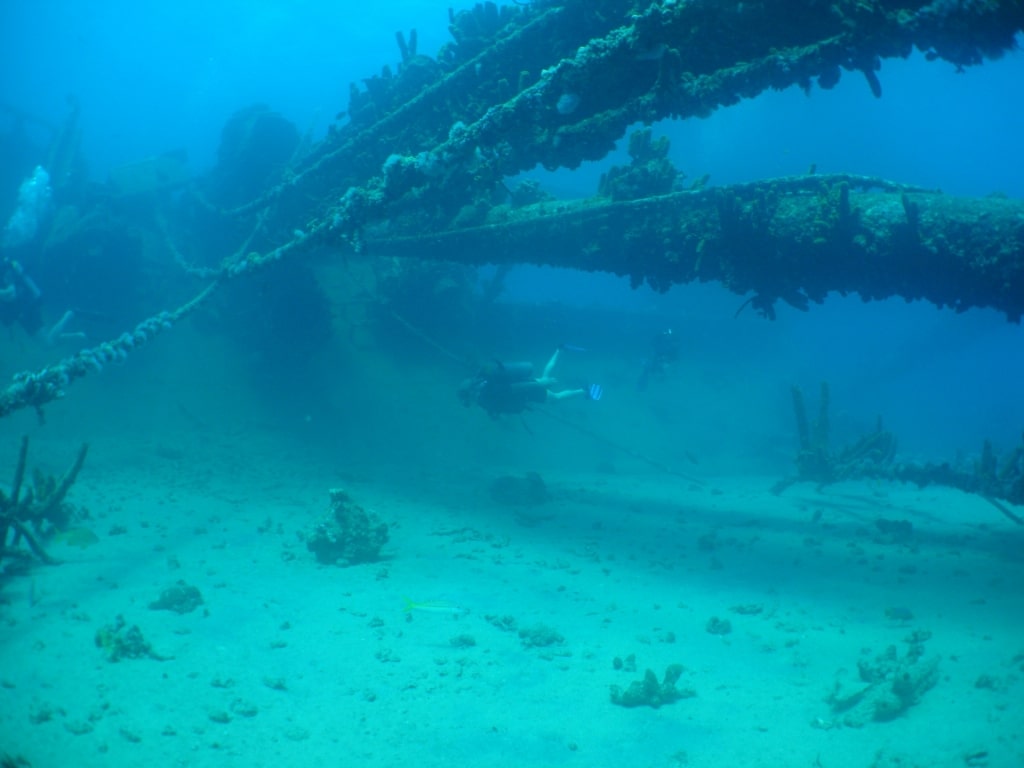
Antilla Shipwreck
Measuring a little over 393 feet long, this is the largest diveable wreck in the Caribbean. While part of the ship is visible above water, the deepest parts are around 60 feet below, meaning it can make for both an advanced or more accessible level dive.
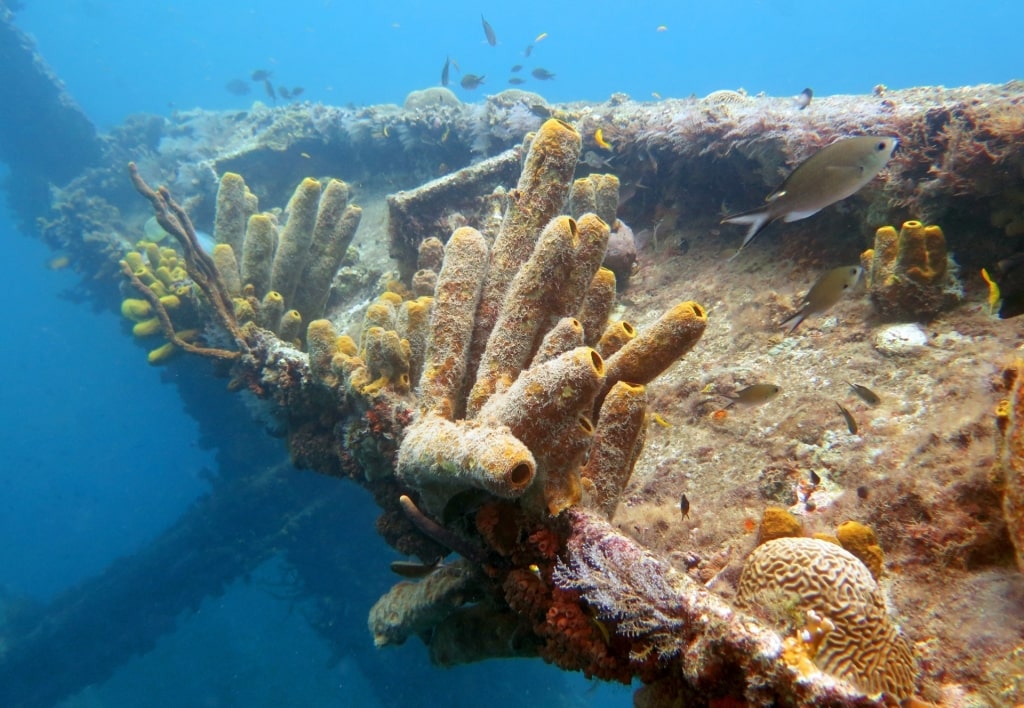
Antilla Shipwreck
With coral formations, shoals of brightly colored fish, and moray eels, this is already a beautiful dive, made even more special by being able to explore parts of the ship’s rooms. Non-divers can also visit the site by swimming above, the clear visibility allowing for a decent view.
Read: Aruba Travel Tips
Malmok Bay
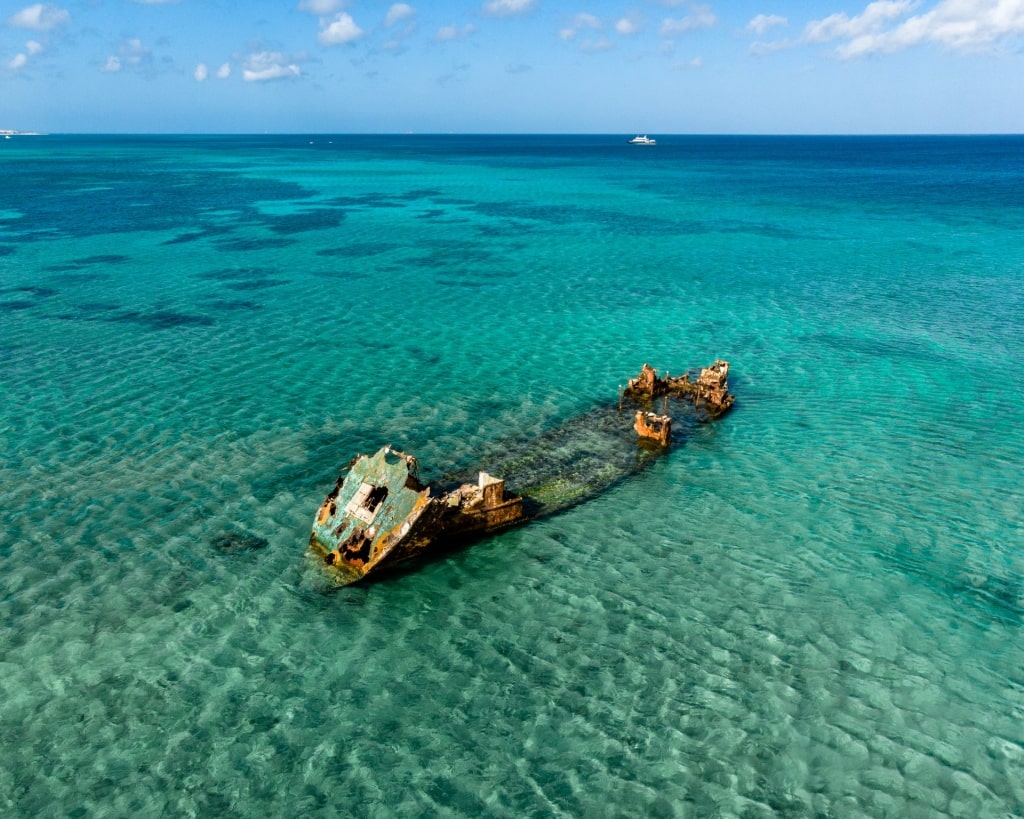
Malmok Bay
As home to the Antilla Shipwreck, the rest of Malmok Bay, on the island’s north, can be easily overlooked when planning an Aruba scuba diving trip. However, there’s plenty more to enjoy above and below at this location.
The beach here is a narrow stretch of fine white sand curving round the bay, the crystal-clear water offering excellent visibility. Shallow waters make Malmok Bay a haven for shore divers, especially entry-level divers, and marine life sightings are common thanks to the reef just off the beach.
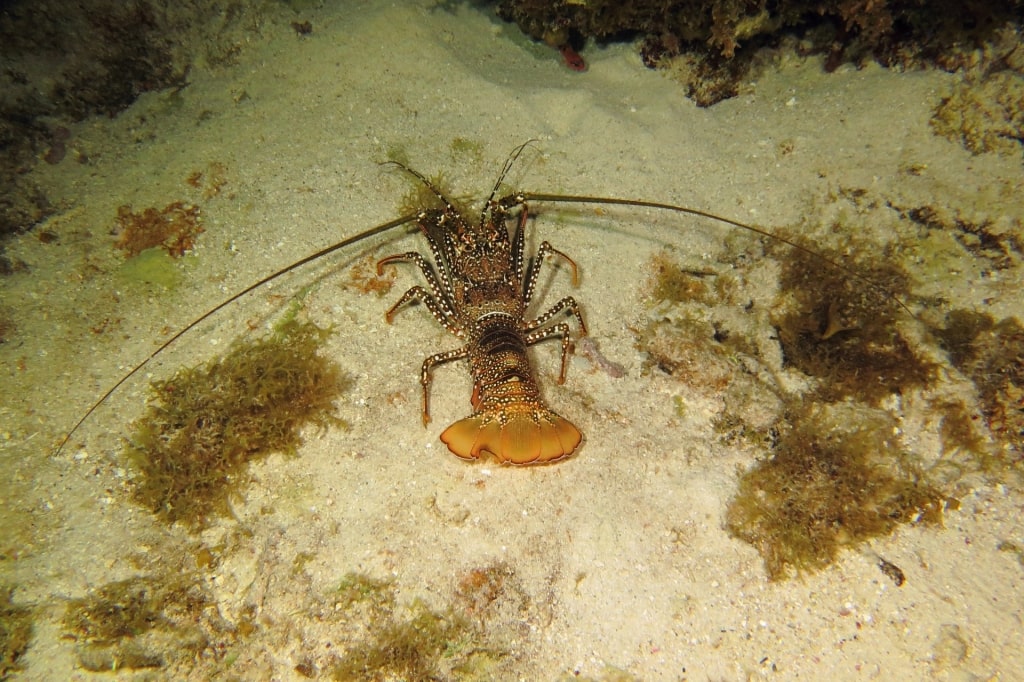
Lobster
As this is a nursery for crustaceans, including crabs and lobsters, alongside juvenile fish, feeding turtles and stingrays are common visitors here, while you can also spot sea urchins among the corals.
This dive site is best explored before midday, when the number of catamaran cruises and boat tours grows, making the waters a little more cloudy.
Renaissance Island’s Airplane Wrecks
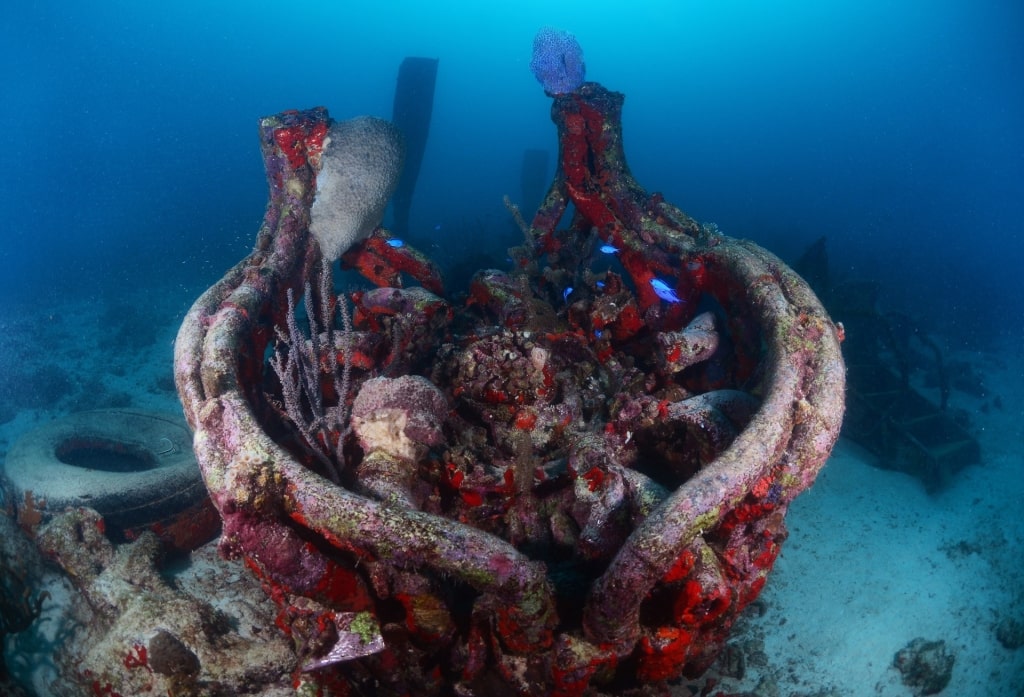
Airplane wrecks
One of the most unique locations for scuba diving in Aruba can be found just off Renaissance Island, a private iguana- and flamingo-inhabited resort escape.
Anyone with the correct dive qualifications can dive into the surrounding waters, and the two purposefully sunken airplanes provide a unique and fascinating underwater playground.
Comprising a YS-11 turboprop, Air Aruba’s first aircraft, and a DC-3, the two airplanes provide differing experiences, with your type of qualification deciding which site you can visit.
Due to a hurricane, the DC-3, now broken in two, has been dragged to a deeper 78 feet, while the YS-11 is close to fully intact, and lying at around 40 feet, makes for an open-water friendly dive.
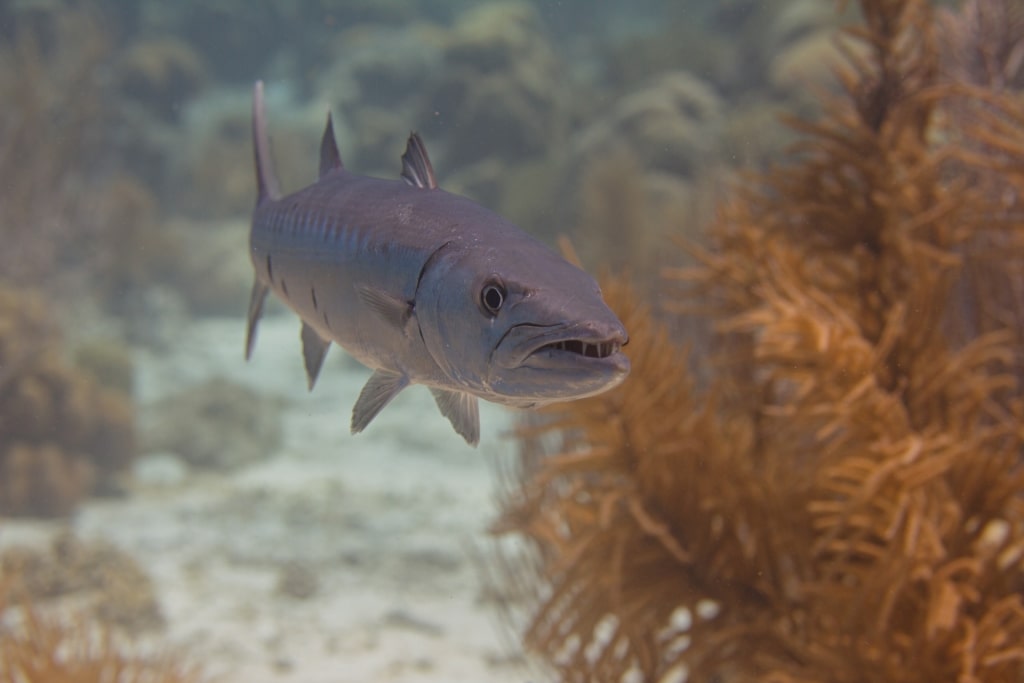
Barracuda
While the marine life, which includes morays, stingrays, and barracudas, is undoubtedly a draw, the most exciting part of the dive is being able to venture inside the aircraft, as the doors were removed before the places were sunk.
Spot the remains of the propellers, cockpit, and fuselage as you circle the site, but be wary in case of strong currents.
Baby Beach
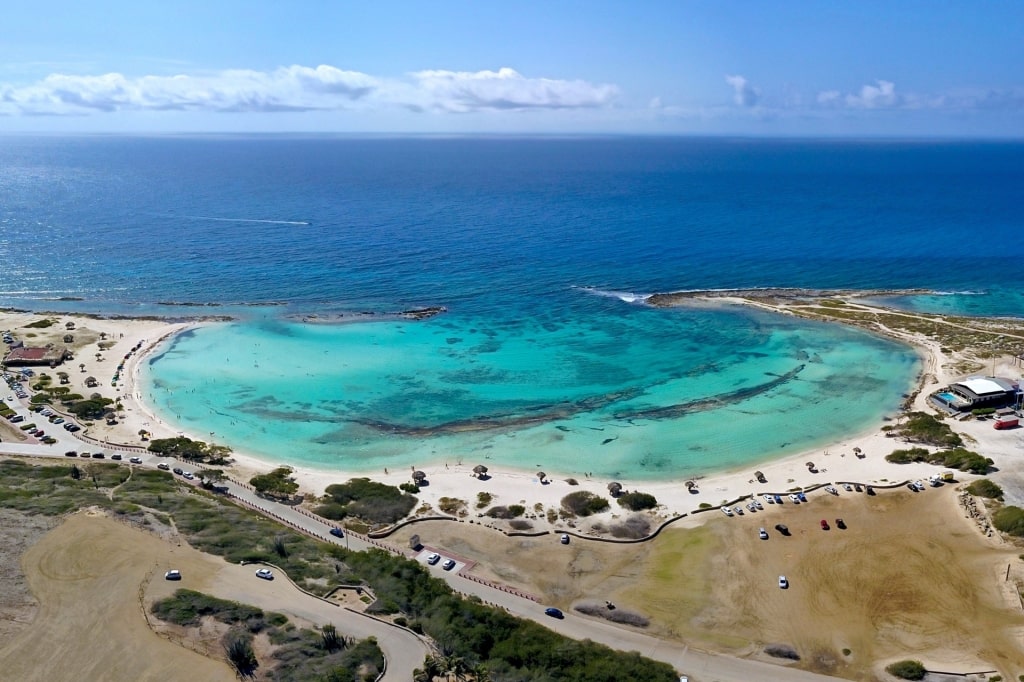
Baby Beach
San Nicolas’ breathtakingly blue and crescent-shaped bay is one of the finest beaches in Aruba, but it also provides some excellent and accessible scuba diving.
Outside the bay, colorful reefs teem with marine life, the barracudas and parrot fish being a particular draw. The coral formations themselves are also exquisite, and as the south of the island generally sees fewer visitors it’s usually quieter than the resort-lined beaches further north.
Entering the waters directly from Baby Beach is possible, although the stronger currents beyond the bay may mean less-confident swimmers will want to check tidal reports first or consider a boat dive.
Pedernales Wreck
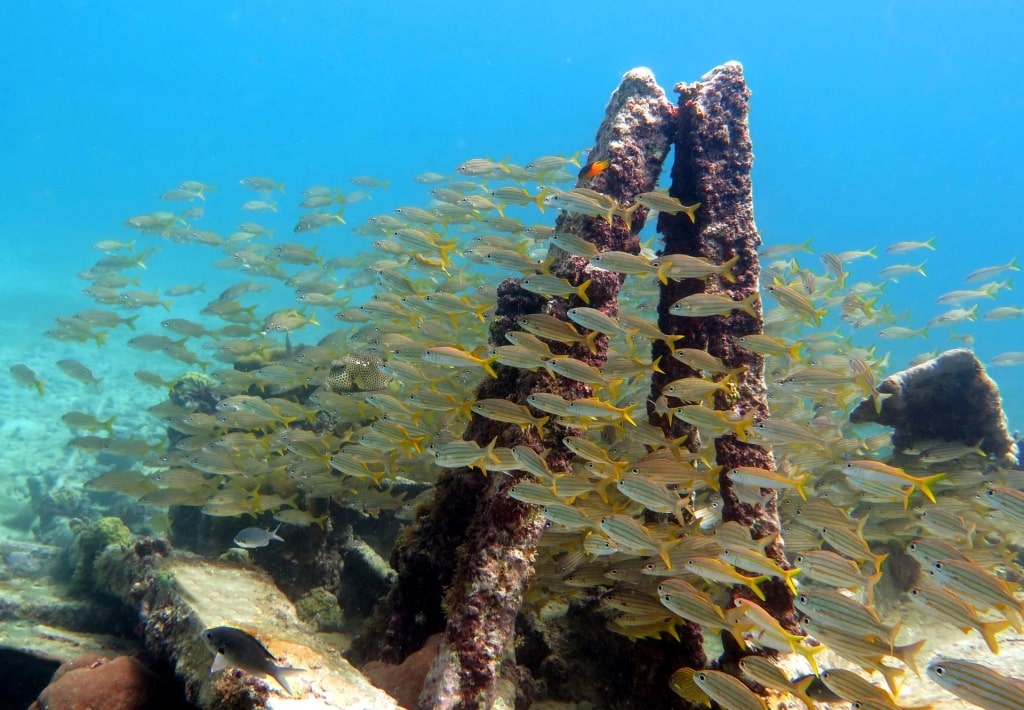
Pedernales Wreck
Another Aruba scuba diving site for shipwreck fanatics, the SS Pedernales tanker is particularly inviting as it sits just 33 feet below the surface, meaning there’s plenty of light in which to explore its history.
Italian-built, operated by the British, and shot down by a German torpedo, Pedernales’ story stems from World War Two.
Even though the torpedo caused vast damage, it didn’t sink the ship, which later became a target practice site until finally settling on the seabed below. While this means the ship’s structure is far from complete, various sections have blossomed as an artificial reef.
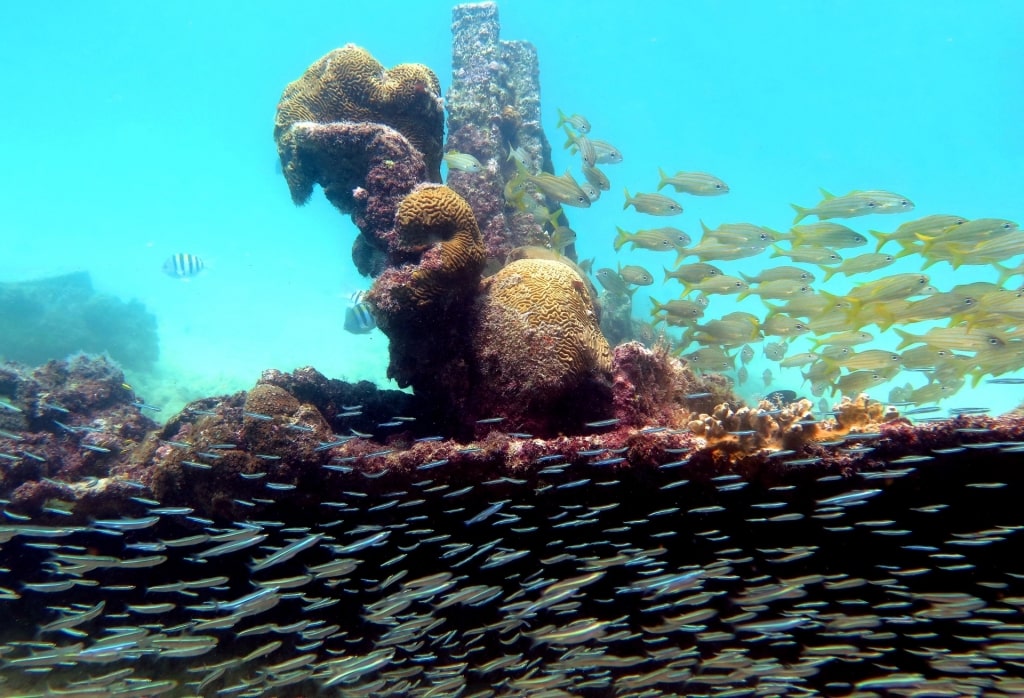
Pedernales Wreck
You’ll be able to spot some of the ship’s cabins with the remains of their facilities intact, now inhabited by shoals of fish. Stingrays, parrotfish, and plenty of smaller species are often sighted.
For beginner divers, the Pedernales is an exceptionally wonderful experience with generally low currents and reliable visibility.
Read: What Is Aruba Known For?
Arashi Beach
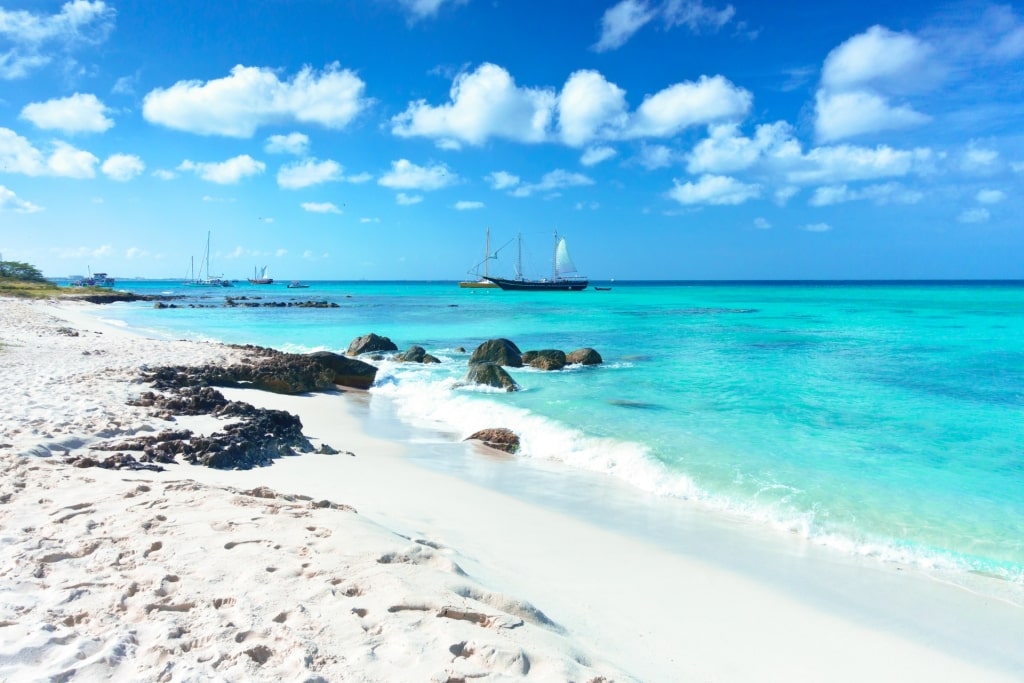
Arashi Beach
At Aruba’s north-western tip, Arashi Beach’s palm-fringed sands bask under the shadow of the California Lighthouse, named after a shipwreck of the same name. While it might be hard to tear yourself away from the shoreline, a diverse dive site along the reef awaits.
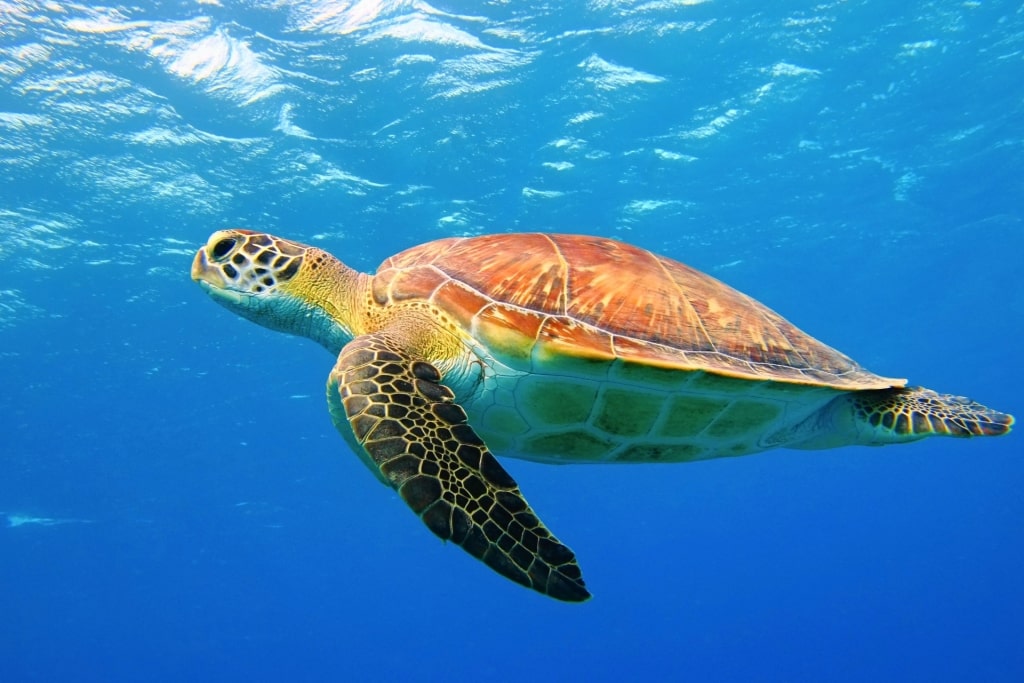
Sea turtle
As this is both a feeding and cleaning ground, sightings are common, with hawksbill and green turtles commonly seen alongside delicate angel fish.
As with most of the best locations for scuba diving in Aruba, Arashi Beach also features the remains of a wreck. Littered across the ocean floor, the debris of a Lockheed Lodestar airplane offers an open water level experience at around 40 feet.
There are sponges and corals around the wreckage, as well as shoals of snapper and parrot fish, while you could be lucky and spot an octopus.
Cabeza Reef
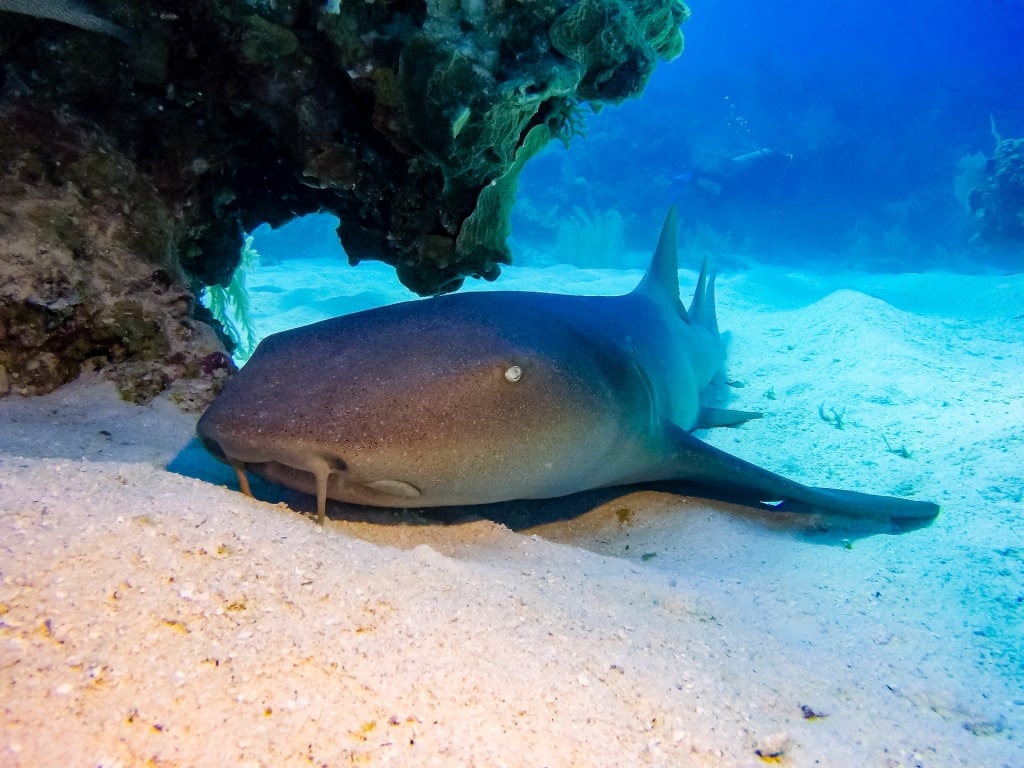
Nurse shark
For advanced and experienced divers, Cabeza Reef on the south of the island sits just around the corner from the windward side, meaning there are wilder waters here. While the strong currents provide more of a challenge, they also mean plenty of marine life spotting.
Cabeza is touted as one of the best Aruba scuba diving sites for shore dives. Once you’ve accessed the reef, you’ll be mesmerized by the coral forests and bigger fish sightings, from groupers to nurse sharks.
The currents offer the chance for a drift dive, so you can really relax and enjoy the show. However, this isn’t a location to be underestimated.
With the intense pull potentially leading to a lack of exit opportunities, you’ll certainly want to be equipped by a professional outfit and accompanied by a local instructor or dive master who knows the Cabeza Reef inside out.
Read: Best Things to Do in Aruba
Serito Pinnacle
Something of a secret dive site, the Serito Pinnacle is found offshore from Cabeza Reef and, again, is only suited to advanced divers accompanied by a qualified local guide. You’ll need to charter a boat to venture here.
If you take the opportunity to seek out this less accessible location, you’ll be more than rewarded with one of the Caribbean’s best dive sites.
As there are very few visitors, the corals at Serato have been little touched by human activity. Protruding from the ocean floor, the pinnacle is coated in corals and sponges, most still vivid in color.
This is a home to nudibranchs, so macro-enthusiasts will be in their element here, while the reef fish swirling around the structure will entertain even the most experienced divers.
Pet Cemetery
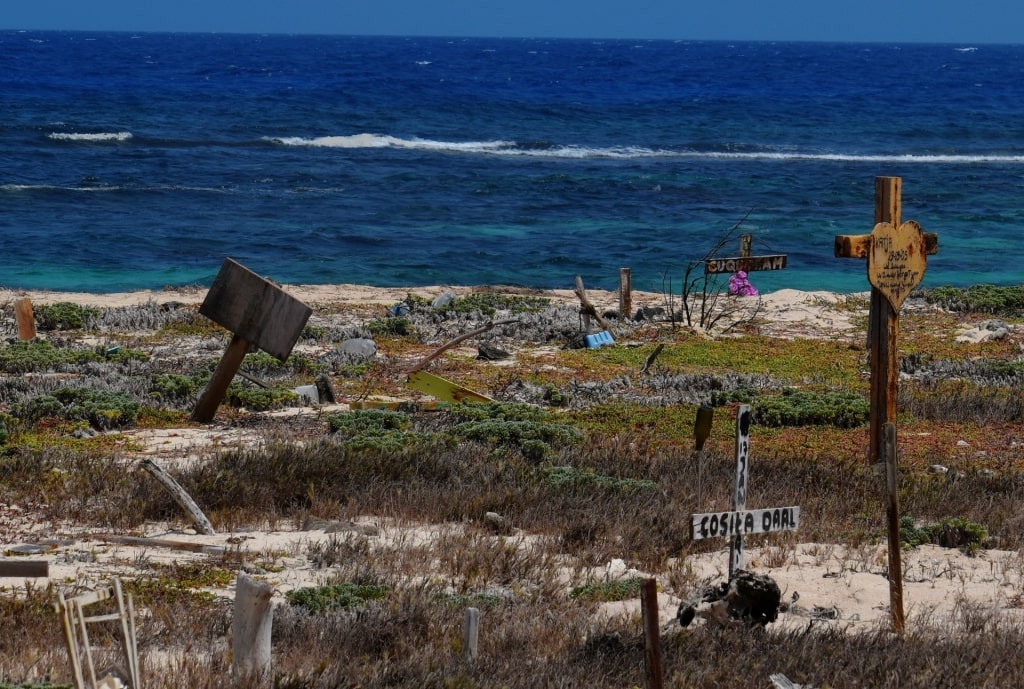
Pet Cemetery
Given the rather poignant name, it shouldn’t be surprising that Aruba’s Pet Cemetery Reef sits alongside a final resting place for beloved pets on land. Underwater, however, everything is alive, and the extensive reef houses plenty of marine life among the diverse corals.
You’ll find this shore-diveable advanced site, also commonly known as Santana Reef, on Aruba’s south coast. While visibility can be slightly reduced compared to other locations on the island, the interesting array of corals and nearly unvisited lower sections will be tempting for divers seeking a more challenging experience.
Mango Halto
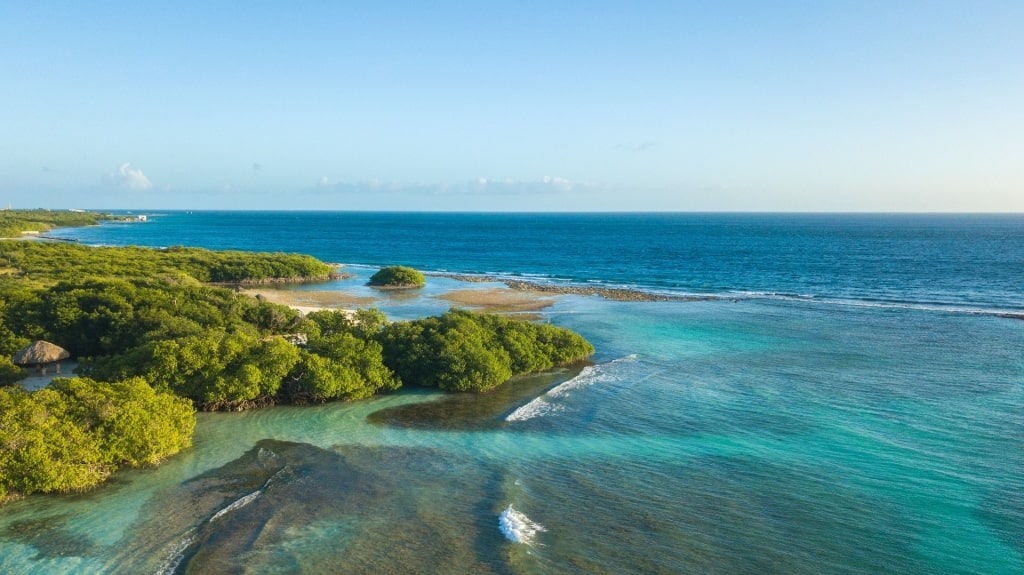
Mango Halto
If it’s your first-time scuba diving in Aruba, then pretty-as-a-postcard Mango Halto is the perfect place to venture.
This secluded, mangrove-enveloped bay south of the airport has long been a conclave for beachgoers eager to avoid the busier shores to the north, while underwater, the reef has found fame as one of the island’s best diving spots.
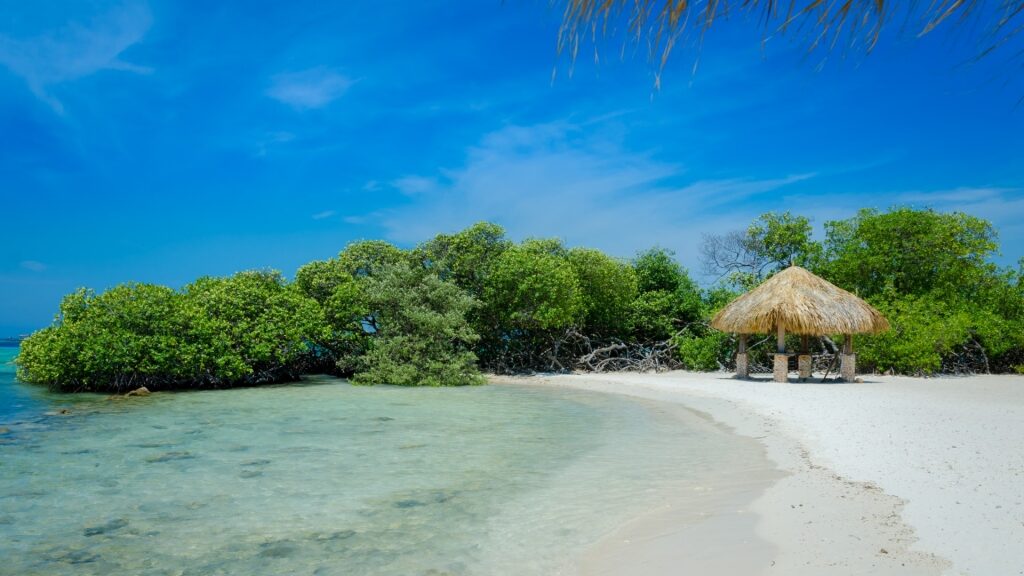
Mango Halto
The rich ecosystem is awash with corals, sponges, and a whole host of fish species. In the shallows, you’ll likely see cuttlefish and turtles alongside the Elkhorn corals. Venture to the deeper sections and barracudas or nursery sharks may keep you entertained.
While currents can provide for a drift dive in sections, overall, this is one of the best entry-level dive sites in Aruba, as highlighted by its popularity with diving schools for training newly certified divers.
Kappel Wreck
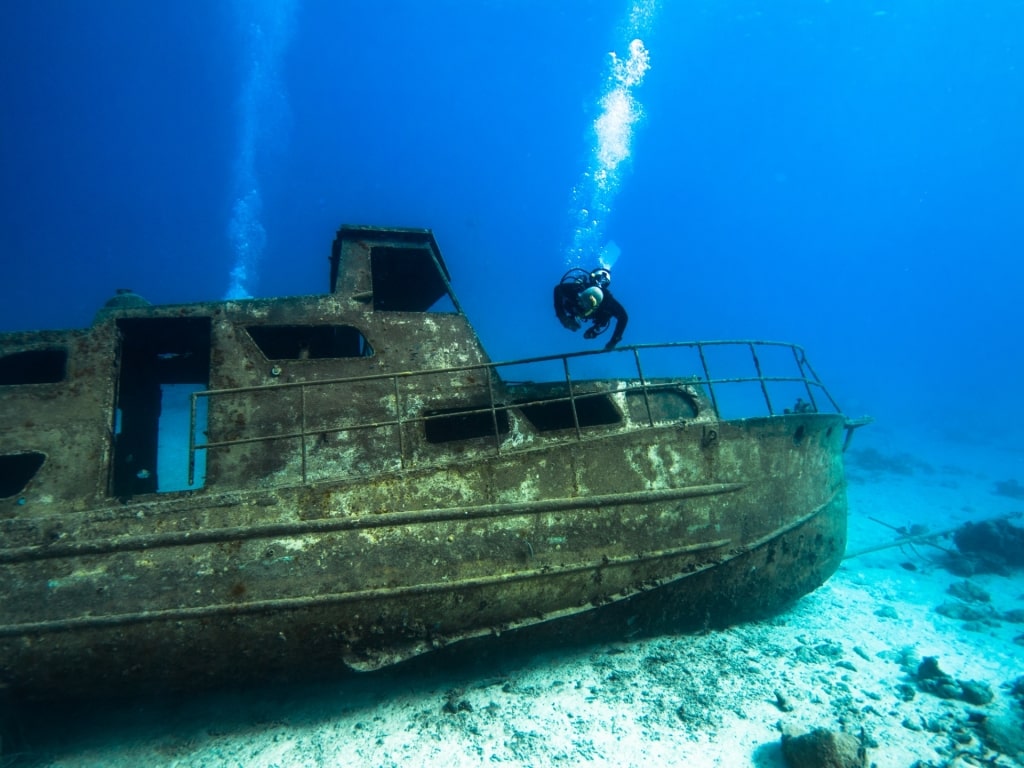
Kappel Wreck
Beyond Mango Halto’s reef, resting at around 42 feet, the Kappel is one of the most recent additions to Aruba’s diving scene.
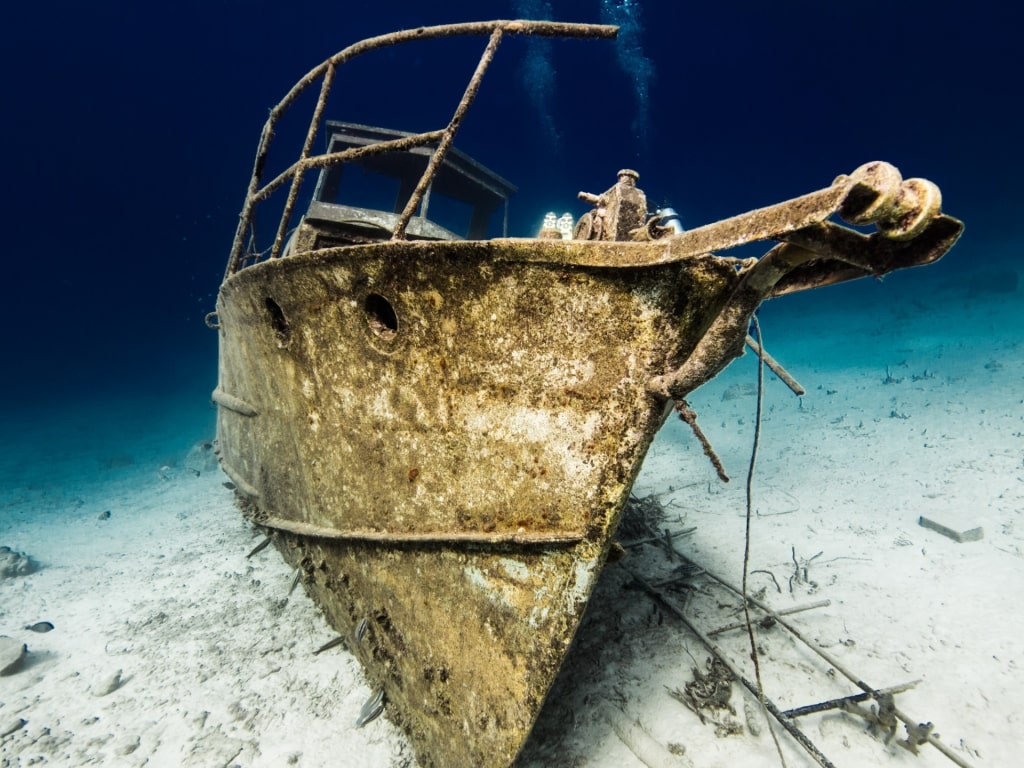
Kappel Wreck
Purposefully sunk in 2009, the small tugboat is a welcoming wreck for beginner and intermediate scuba divers. While the relatively young age of the artificial reef means it’s not developed quite the standing as other sites, such as the Antilla, the fully intact ship entices underwater photographers.
With the clear waters above and shallow location, light easily reaches the vessel, making capturing some epic sunken-ship shots easier, even for amateurs.
If you’re more interested in marine life, you’ll likely want to stick around Mango Halto’s shallow reef. Even though the Kappel is in its infancy as a reef, it’s interesting to see how corals, and some species, have been attracted to the site and witness a developing piece of diving history firsthand.
Boca Catalina
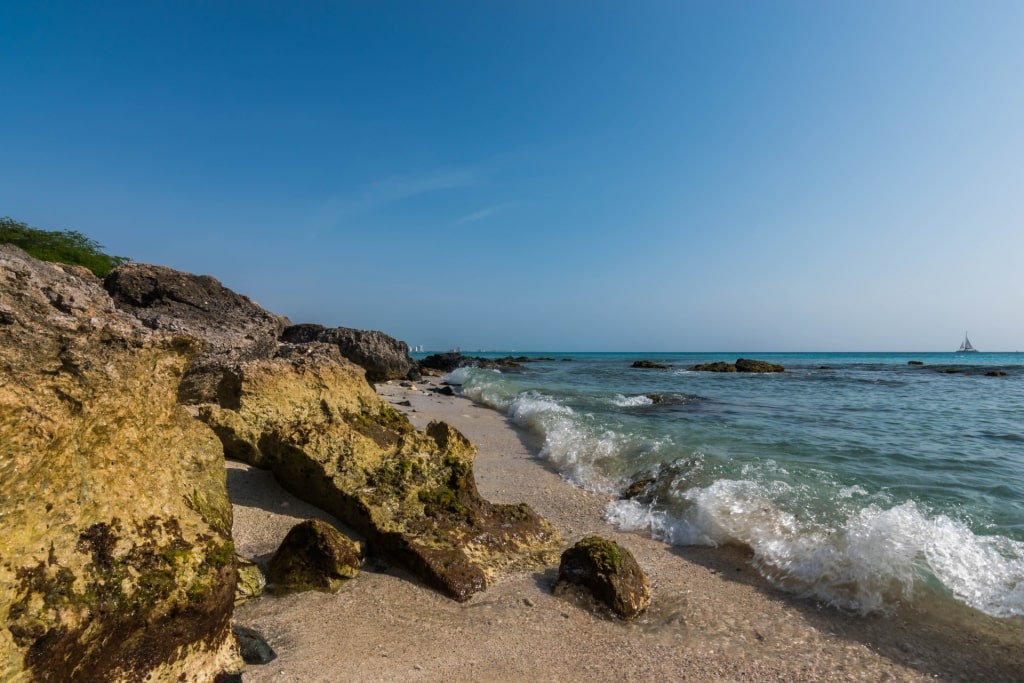
Boca Catalina
It’s impossible to discuss Aruba scuba diving and not highlight the turquoise waters of Boca Catalina, towards the island’s most northern point.
As you head underwater, an equally impressive reef awaits, also easily explored with snorkel gear and a beach entry. The bonus of visiting with a tank attached is that you’ll enjoy a more in-depth exploration of the cove just north of the beach.
Expect reliable shoals here, with anything from colorfully striped sergeant majors and angelfish to sea snakes and rock lobsters.
Jane C Wreck
Aruba scuba diving is dominated by sunken vessels, and the Jane C wreck, a cargo ship near the Barcadera Reef, has been flourishing as an artificial reef since 1988.
Supposedly, contraband material was found on the ship when it arrived in Aruba, and with no one wanting to lay claim to the vessel (or the crime), it lingered in the port before being gifted to the diving community.
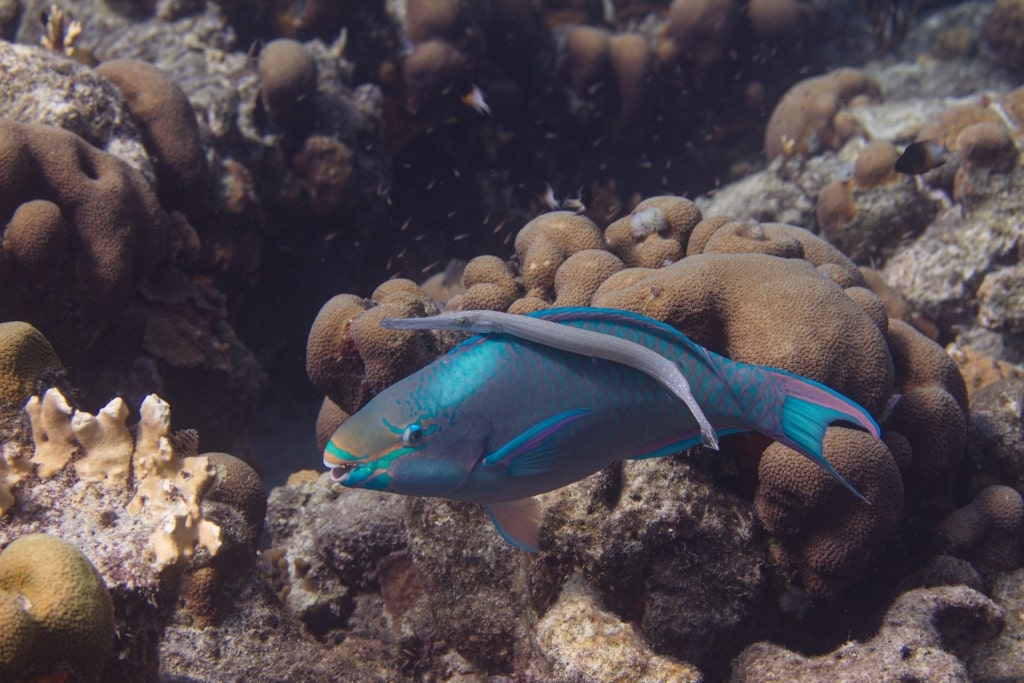
Trumpetfish
The wreck is coated in rich sponges that are taking over the decaying exterior, its deepest point the propeller, 88 feet down. Turtles, trumpetfish, and nurse sharks are commonly reported sightings here, as well as great barracudas and eagle rays.
Finger’s Reef
Gaining its title from the reef’s shape, pointing towards greater depths, this long and extensive reef is situated on Aruba’s southern side. Although this means it’s more protected, strong currents are still common at this site, so most of the dive spots are more suited to those with experience.
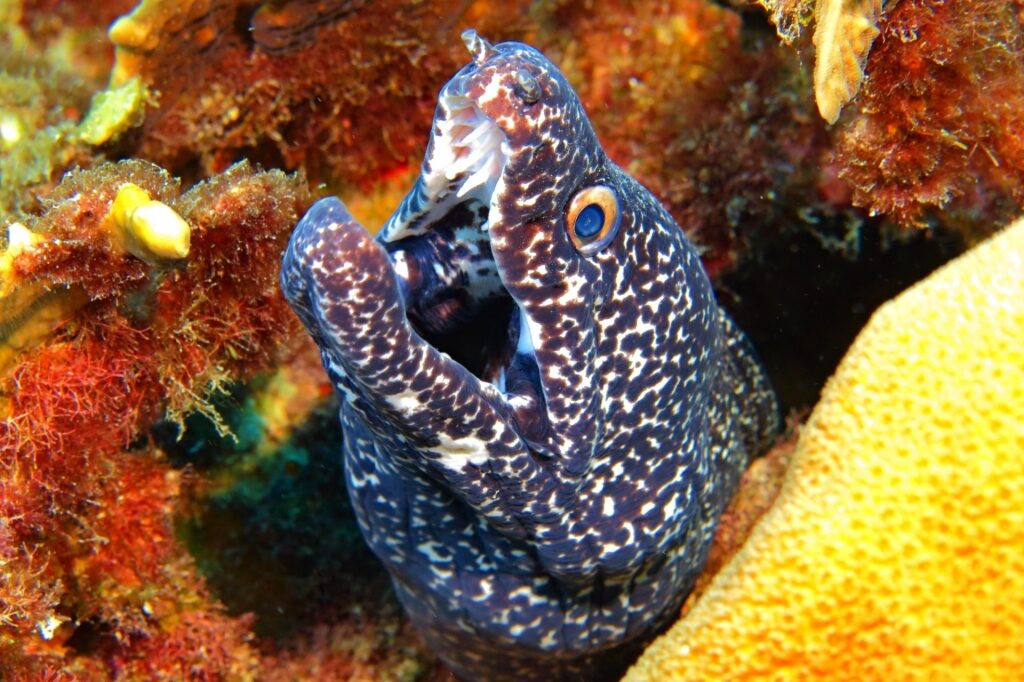
Moray eel
Between the colorful corals, the chances of spotting turtles, shrimps, and other crustaceans are high. Moray eels are also a common sighting. If you can tear your eyes away, there’s also a good chance you’ll spot larger fish in the deep if the visibility is clear. A ray sighting is always something worth celebrating back on the beach with a chilled local Balashi beer.
Read: Best Places to Visit in Aruba
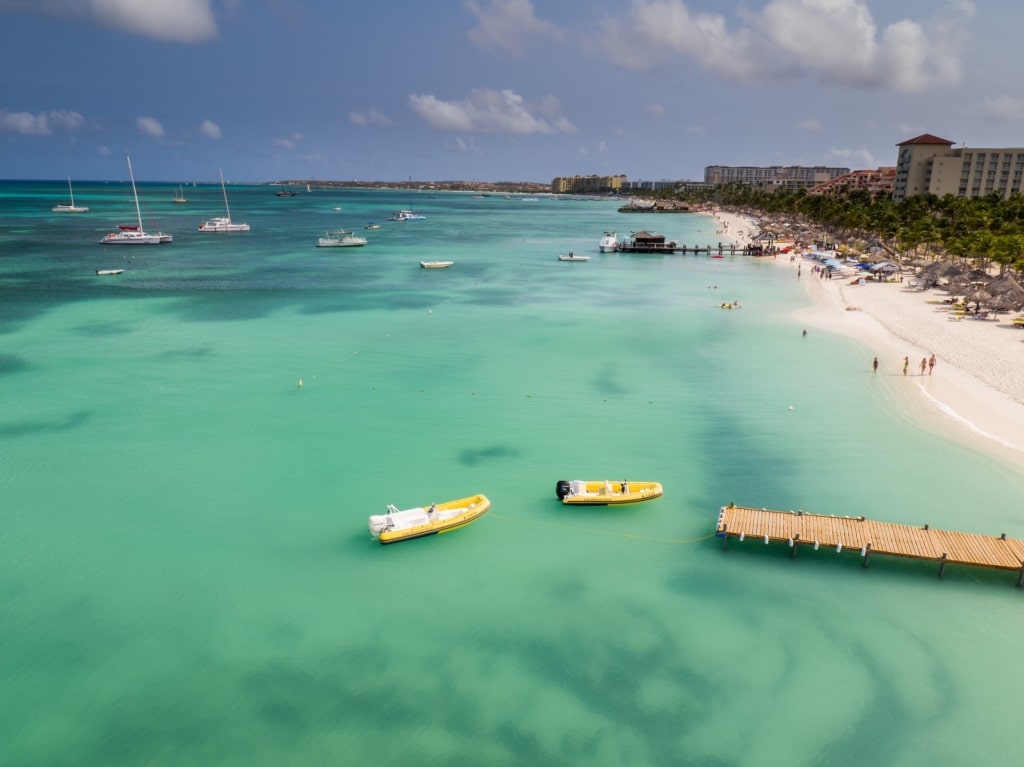
Aruba
Ready to dive in and explore Aruba’s shoreline below and above water? Browse Celebrity’s cruises to Aruba to plan your next Caribbean vacation.
